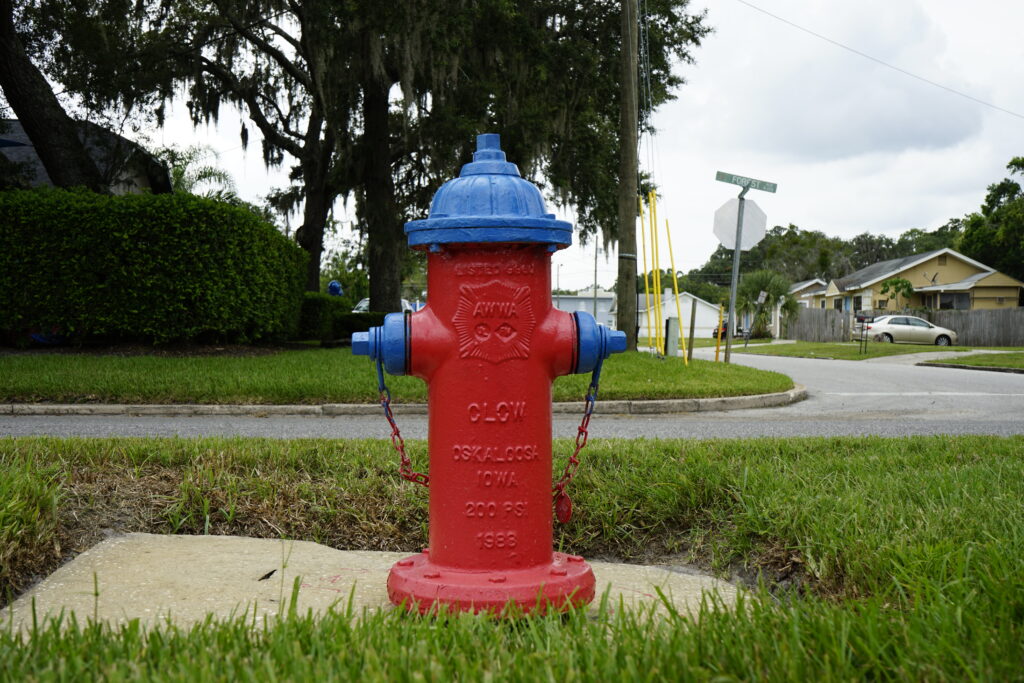
Marshall Tempest
Key Points
Flow tests, hydrant ratings based on national guidelines
The Apopka Fire Department (AFD) is working to promote public safety through proactive fire hydrant management and following new fire hydrant standards.
The discussion about fire hydrants came up at the July 9 fiscal year (FY) 2026 city budget workshop, where fire and police departments presented their proposed budgets to the Apopka City Council.
In discussion about the FY26 fire budget, Commissioner/Vice Mayor Diane Velazquez asked Fire Chief Wil Sanchez, who was presenting his department’s budget requests, to educate her about fire hydrants.
“How are we now? Because I’m seeing different colors and the new developments that are coming in,” Velazquez said, noting she had received questions from residents about the issue. “Are we putting fire hydrants in before they even start working? How many fire hydrants are we putting in each of these developments?”
Sanchez discussed the implementation of new fire hydrant standards, with the third-party company HydroMax conducting flow tests and rating hydrants based on National Fire Protection Association (NFPA) guidelines.
In residential areas, a hydrant is placed every 500 feet, while for commercial properties, hydrants are placed based on specific requirements. The placement depends on distance to water lines, distance from previous hydrants, the building type, and the fire flow rate needed, Sanchez told Velazquez.
A fire flow rate is the amount of water needed to suppress a fire.
The fire hydrants’ conditions, water flows and fire hydrant locations are all part of the auditing process the Insurance Services Office (ISO) conducts.
ISO rates fire departments nationwide on their quality of fire protection efforts. The AFD is an ISO Class 1, the best score the ISO could offer. A fire department’s ISO rating influences homeowners’ insurance premiums.
“You can’t just say, ‘Hey, we’ve got 100 homes. We have X amount of hydrants going in,” Sanchez said. “It also depends on how far, as far as the nearest hydrant is, and where they have to connect to.”
Ensuring the condition of hydrants is a collaborative effort between the fire department, water department and the city Development Review Committee (DRC).
“That’s a collaborative effort between the water department, as far as they tell us, as far as what they could actually provide,” Sanchez said. “That is the part of DRC is making sure that all the players at the table are aware of, hey, what development is going in, what are the requirements, what are the needed fire flows for it, and can we actually meet that standard?”
At the budget workshop, a local resident, Dr. Phyllis Olmstead, praised the fire department for its diligence in community service.
One point she raised was regarding the frequency of mowing grass around fire hydrants. The overgrowth of grass had obscured fire hydrants to the point where they were difficult to see.
“I happen to notice just the top of one little hydrant out there, and the grass was four feet in front of it,” Olmstead said. “So, they’re trying to catch up with these things. They can’t be out there every day checking every hydrant, but the departments have to work together, and it wasn’t the mowing department’s fault if the vendors weren’t doing it.”
At the July 9 budget workshop, the Apopka Fire Department asked for more personnel, including nine to staff a second tower truck, three more firefighters and three more Emergency Medical Services (EMS) captains.
The FY26 fire department’s budget is $29,587,063, which includes rises in costs for fire equipment and personnel, including $627,000 for a new tower truck, $61,800 for EMS billing services, and $112,300 for costs of pharmaceuticals and medical supplies.
Suggested Articles
No related articles found.

